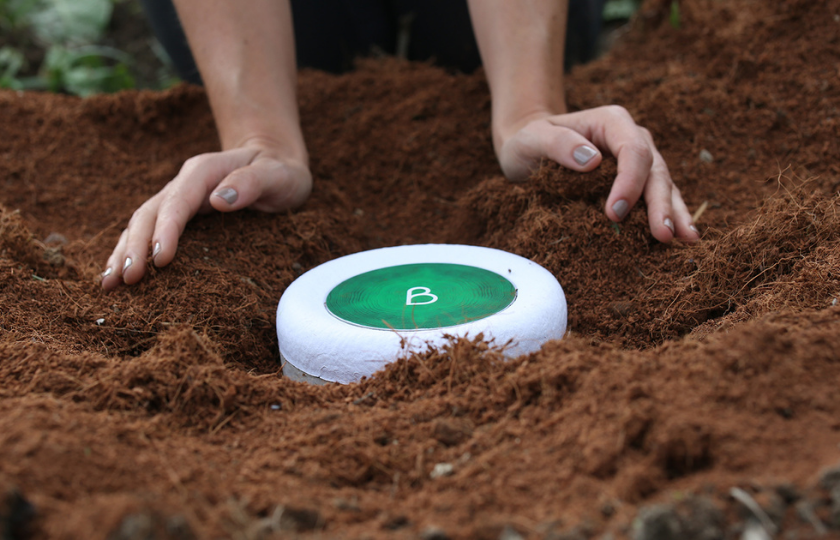Our carbon footprint doesn’t end when we die. Just when it finally seems we won’t produce any waste or emit more carbon into the atmosphere, the coffins made out of wood or metal, the concrete used in our graves, and even our slowly decomposing bodies which emits high amounts of methane – a greenhouse gas – will continue to pollute the planet.
Conventional funerals and burials contribute to climate change in numerous ways.
Each year, more than 30 million feet of board timber, 80,000 gallons of embalming fluid, 1.6 million tons of concrete, and 90,000 tonnes of steel are used for burials, in the US alone. While the average cremation uses 28 gallons of fuel to burn a single body, emitting about 250kg of CO2 into the atmosphere.
In a bid to make death more sustainable, a few companies have sprung up offering tree pod burials. They claim it helps reduce waste while creating life from death. But what is a tree pod burial, and how does it work?
Viable.Earth has taken a look into some of the biodegradable urns that can turn your ashes (or remains) into a tree.
Tree pod burials
Instead of using caskets or coffins, tree pod burials involve putting human remains in pods and then burying them like a “seed” to turn them into a tree. These pods are usually made from biodegradable materials, so they can naturally break down over time by bacteria. When mixed with ashes or remains, they become fertiliser for the tree.
These biodegradable urns can turn your ashes into a tree
Edenn
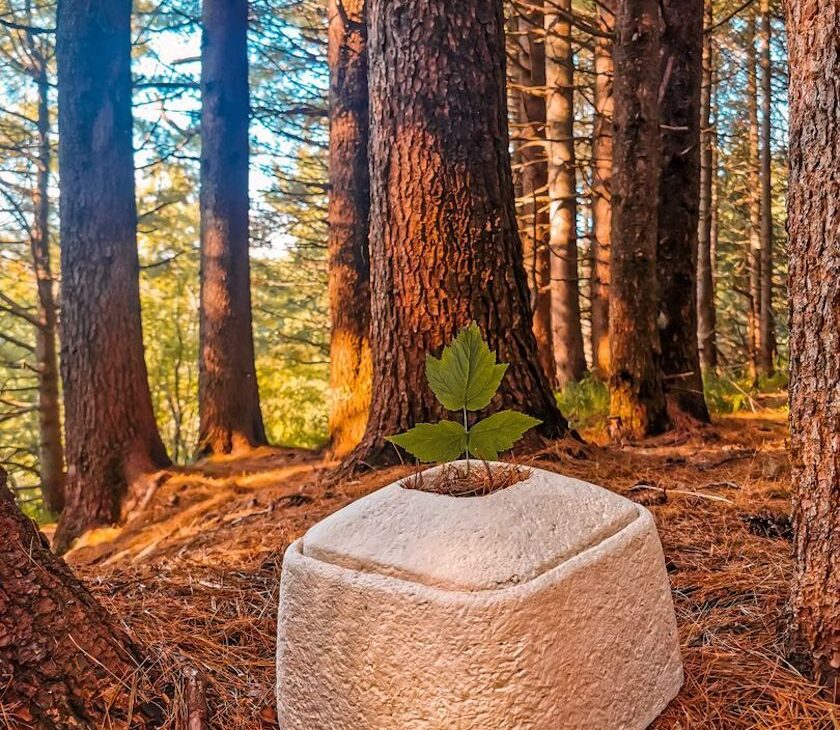
Material: Mycelium (mushroom).
Process: Cremation + bio-burial.
Edenn is a UK-based startup on a “mission to bring sustainability into the afterlife” with its 100-per-cent biodegradable, mushroom-based and tree-bearing urn.
The urns are made from Mycelium, the root structure of mushrooms, and according to the company, its design is not only compostable but also a good source of nutrients for plants.
One must be cremated by traditional means before being placed in Edenn’s biodegradable urn. Like a traditional urn, it has a lid and a chamber to put in the ashes. The company recommends that a separate living tree (sapling) be purchased and planted in the urn instead of seeds to ensure successful tree sprouting.
Bios Urn
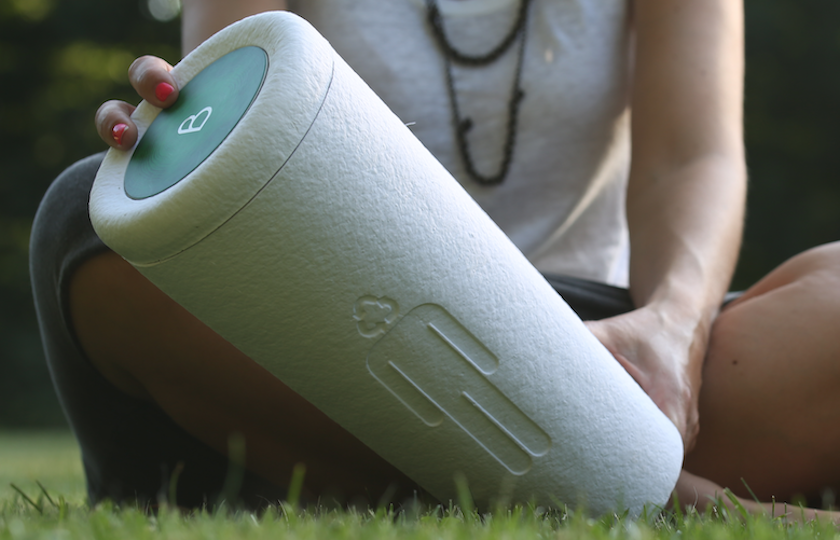
Material: Coconut shell, peat, cellulose.
Process: Cremation + bio-burial
Launched in 2001, Bios Urn is one of the first companies to launch a biodegradable urn that converts you into a tree after dying. It is made from 100-per-cent biodegradable materials and has a two-layer design that allows complete germination of the seed before contact with the ashes.
According to the company, customers can use the Bios Urn with any seed from a plant, shrub, or tree. The pods don’t have an expiration date, so they can be purchased ahead of time and kept for future use. It can also be used for transferring old ashes.
The company offers three varieties of bio urns: the original version, a bio urn for pets, and a bio urn lite recommended for indoor plants and small trees.
The Living Urn
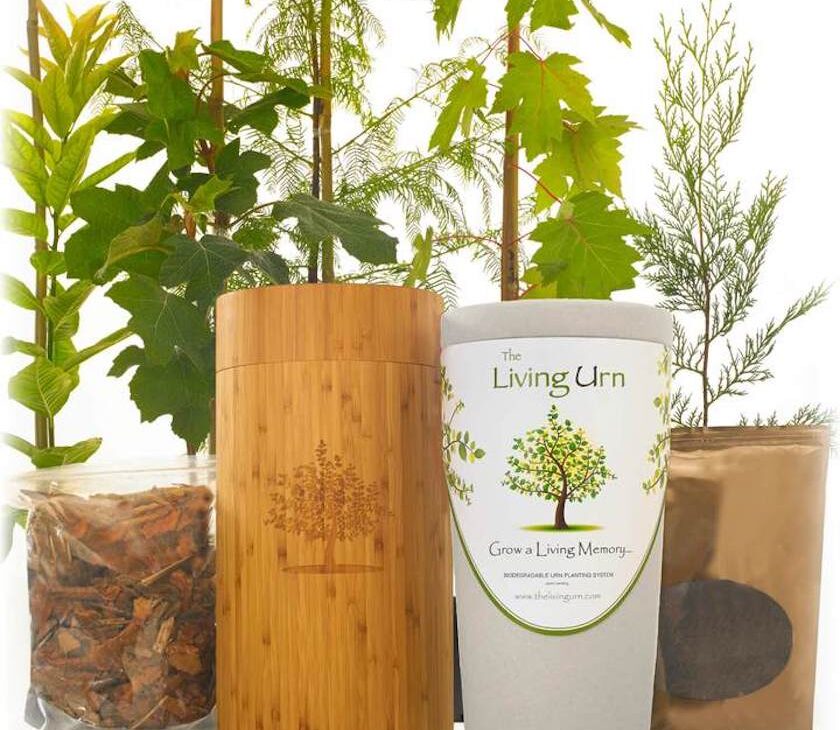
Material: Bamboo, recycled plant material (patented, ingredient undisclosed), Rootprotect (soil additive, patented, ingredient undisclosed)
Process: Cremation + bio-urn
Based in the US, the Living Urn’s creators were inspired by the idea of giving back to nature while keeping a living memory of their loved ones after their passing.
The Living Urn is made from recycled plant materials and made by wetting and drying with heat and pressure – no glue, no chemicals, no machinery. According to the company, this results in a smaller carbon footprint.
The company provides the customer with their own tree (up to 10cm tall) as part of the product’s patented planting system to place in their urns. In addition, depending on the customer’s location, “Memory Forests” are available to provide spaces for their Living Urns.
Capsula Mundi
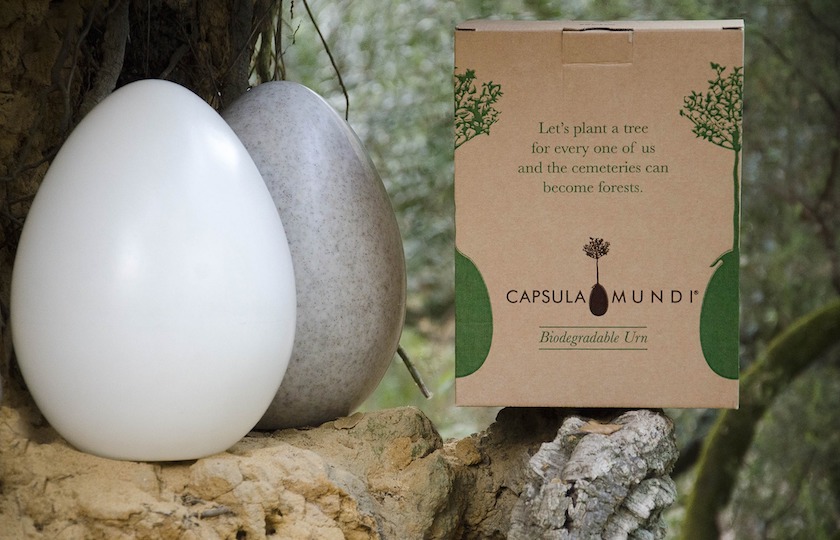
Material: Bio-plastic (actual material undisclosed)
Process: Cremation or direct burial + pod
Compared to the biodegradable urns we mentioned earlier, Capsula Mundi doesn’t require any cremation.
Based in Italy, the company offers a different approach to death. The product is a biodegradable, giant, egg-shaped pod called a Capsula. The deceased body is placed in a fetal position before rigor mortis sets in or after it passes when the body becomes soft and malleable for positioning. Once the body is placed within the Capsula, it can be buried underground like a seed, and a separate tree sapling is planted on top.
For those wary of burying themselves in a giant pod, the company also has an option to use cremated ashes in a smaller pod where they can be buried by themselves or with a plant on top. The company says that ashes have a very high PH level so when they are placed directly onto open ground, they can prevent the growth of plants. However, Capsula Mundi’s biodegradable plastic shell can neutralise the high PH level of the ash over time.
Is it legal to plant biodegradable urns?
Bio-urns are typically legal to use, especially if you’re going to grow them into your backyard. However, planting regulations vary for each country. For example, in Italy, it is illegal to plant burial pods, and in the US, certain states allow it, while some do not.
Where to plant bio-urns?
- Personal garden or backyard
- Cemeteries
- Forests
- Parks (depending on local regulations).

